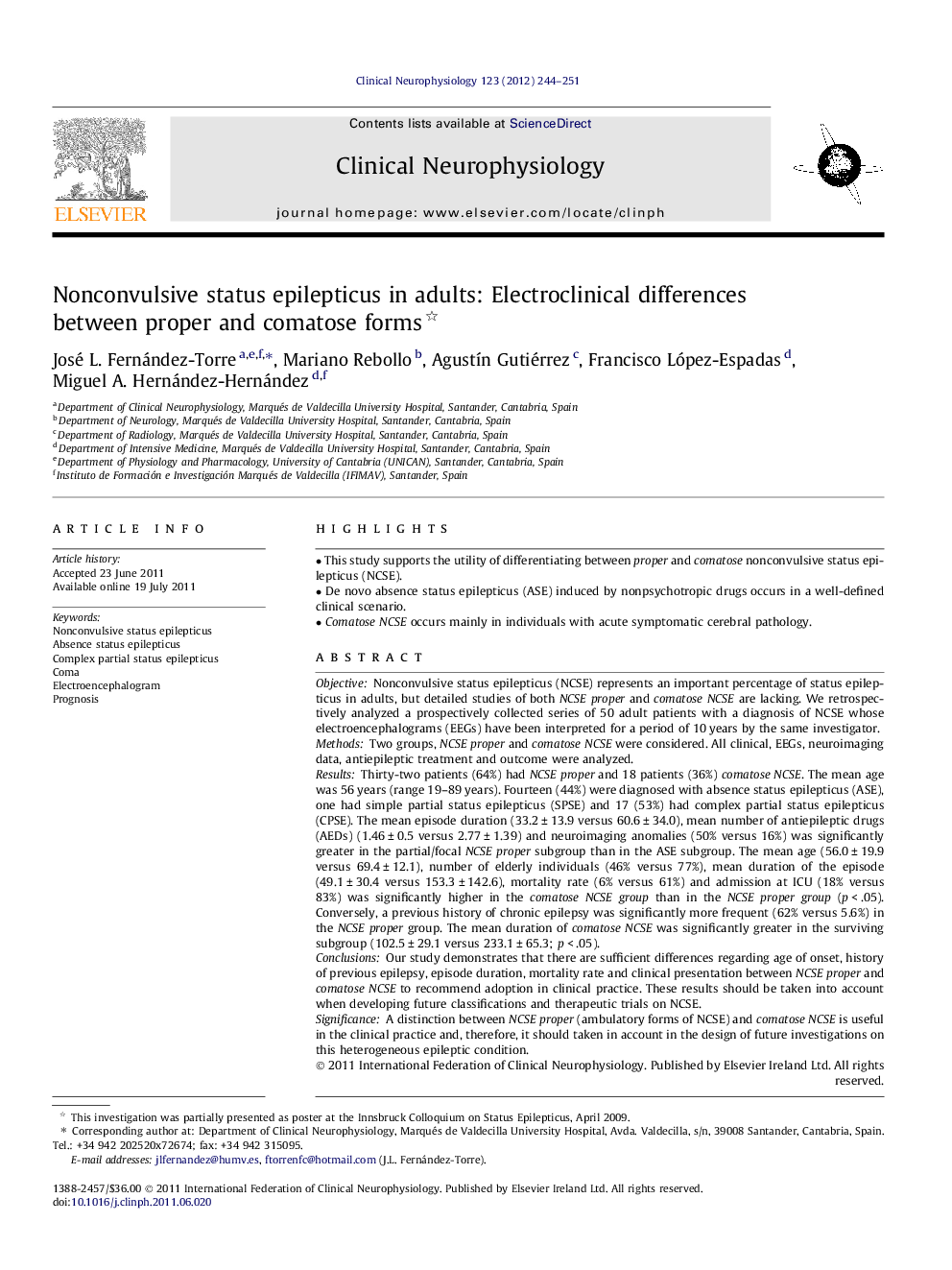| Article ID | Journal | Published Year | Pages | File Type |
|---|---|---|---|---|
| 3045621 | Clinical Neurophysiology | 2012 | 8 Pages |
ObjectiveNonconvulsive status epilepticus (NCSE) represents an important percentage of status epilepticus in adults, but detailed studies of both NCSE proper and comatose NCSE are lacking. We retrospectively analyzed a prospectively collected series of 50 adult patients with a diagnosis of NCSE whose electroencephalograms (EEGs) have been interpreted for a period of 10 years by the same investigator.MethodsTwo groups, NCSE proper and comatose NCSE were considered. All clinical, EEGs, neuroimaging data, antiepileptic treatment and outcome were analyzed.ResultsThirty-two patients (64%) had NCSE proper and 18 patients (36%) comatose NCSE. The mean age was 56 years (range 19–89 years). Fourteen (44%) were diagnosed with absence status epilepticus (ASE), one had simple partial status epilepticus (SPSE) and 17 (53%) had complex partial status epilepticus (CPSE). The mean episode duration (33.2 ± 13.9 versus 60.6 ± 34.0), mean number of antiepileptic drugs (AEDs) (1.46 ± 0.5 versus 2.77 ± 1.39) and neuroimaging anomalies (50% versus 16%) was significantly greater in the partial/focal NCSE proper subgroup than in the ASE subgroup. The mean age (56.0 ± 19.9 versus 69.4 ± 12.1), number of elderly individuals (46% versus 77%), mean duration of the episode (49.1 ± 30.4 versus 153.3 ± 142.6), mortality rate (6% versus 61%) and admission at ICU (18% versus 83%) was significantly higher in the comatose NCSE group than in the NCSE proper group (p < .05). Conversely, a previous history of chronic epilepsy was significantly more frequent (62% versus 5.6%) in the NCSE proper group. The mean duration of comatose NCSE was significantly greater in the surviving subgroup (102.5 ± 29.1 versus 233.1 ± 65.3; p < .05).ConclusionsOur study demonstrates that there are sufficient differences regarding age of onset, history of previous epilepsy, episode duration, mortality rate and clinical presentation between NCSE proper and comatose NCSE to recommend adoption in clinical practice. These results should be taken into account when developing future classifications and therapeutic trials on NCSE.SignificanceA distinction between NCSE proper (ambulatory forms of NCSE) and comatose NCSE is useful in the clinical practice and, therefore, it should taken in account in the design of future investigations on this heterogeneous epileptic condition.
► This study supports the utility of differentiating between proper and comatose nonconvulsive status epilepticus (NCSE). ► De novo absence status epilepticus (ASE) induced by nonpsychotropic drugs occurs in a well-defined clinical scenario. ► Comatose NCSE occurs mainly in individuals with acute symptomatic cerebral pathology.
